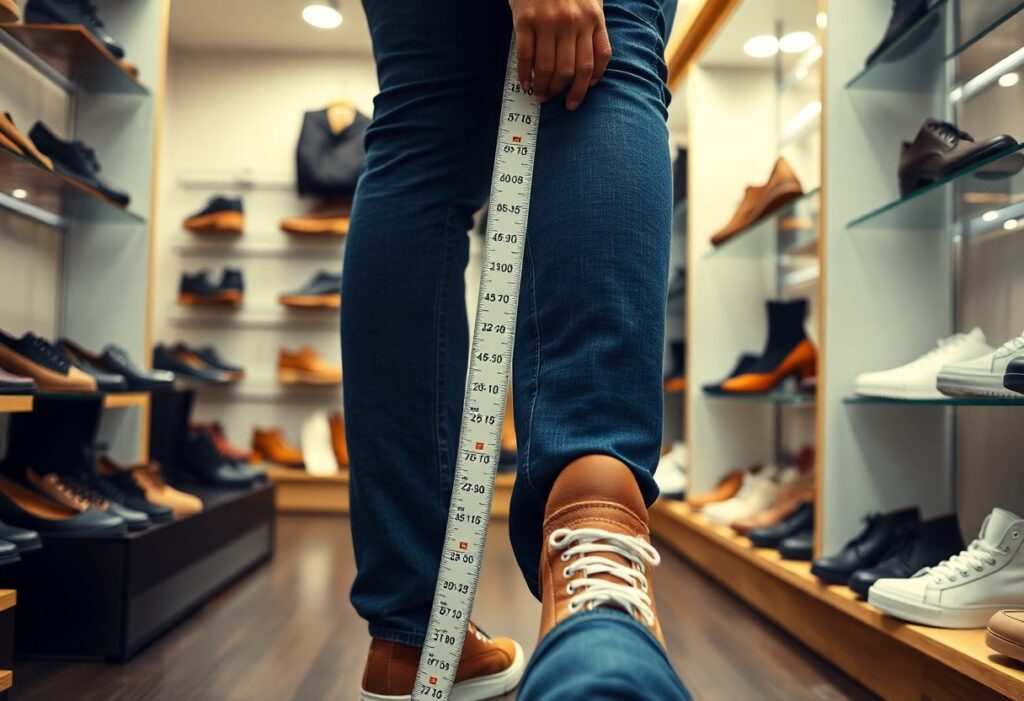
Understanding the intricacies of proper shoe sizing is essential for maintaining foot health. Wearing shoes that don’t fit properly can lead to a range of issues, from minor blisters to severe long-term joint damage. Our feet bear the weight of our entire body, and when shoes do not fit well, it can significantly impact daily comfort, mobility, and overall well-being. It's crucial to recognize the signs indicating incorrect shoe fit to safeguard your foot health. Research indicates that an alarming 75% of individuals experience foot problems stemming from improper shoe sizing. This comprehensive guide will equip you with the knowledge to evaluate your current shoes and select the perfect size tailored to your feet, ensuring comfort and support in every step.
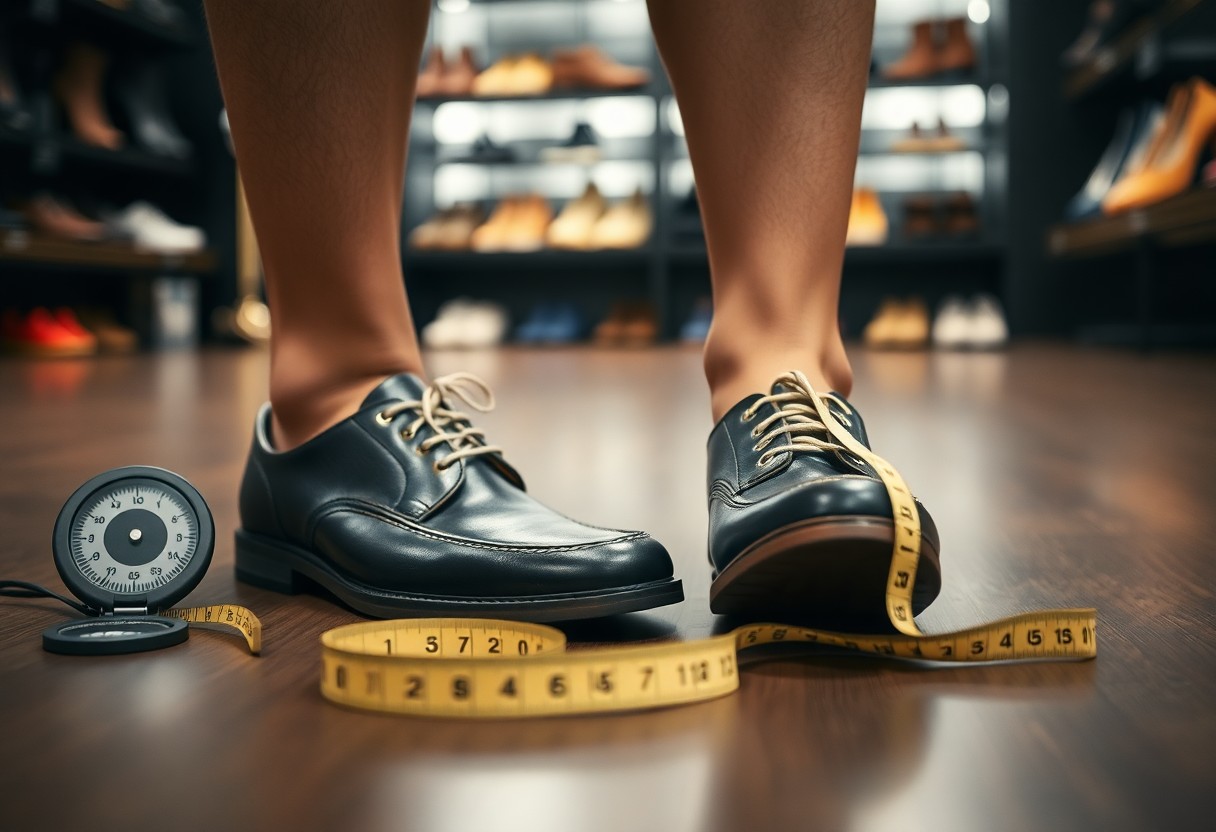
Spotting the Signs That Your Shoes Don’t Fit Properly
Being proactive about your foot health involves recognizing the warning signs associated with ill-fitting shoes. Research shows that 60% of people are currently wearing shoes that are not the right size, leading to a variety of foot-related issues. Your shoes must provide sufficient space for toe movement, the right level of arch support, and consistent comfort throughout the day. Wearing shoes that don't fit correctly can result in long-lasting damage to your feet and can even alter your walking biomechanics. Regularly checking for discomfort, pain, or other physical signs can help you address these issues before they escalate into more serious problems.
Physical Symptoms Indicating Poor Shoe Fit
Common physical indicators that your shoes might not fit correctly include blisters, calluses, and corns forming on your feet. You may notice signs of redness or bruising on your toes, particularly after walking or standing for extended periods. Additionally, your toenails might appear damaged or discolored. If you begin to notice these symptoms, it’s a clear indication that your shoes are either too tight or too loose, necessitating an immediate adjustment in size. Paying attention to these warning signs can prevent potential injuries and ensure your feet remain healthy and pain-free.
Assessing Comfort Levels to Ensure a Perfect Fit
Contrary to popular belief, new shoes should provide a comfortable fit right from the start. Your toes should have ample room to move freely, and your heel should remain securely in place without slipping as you walk. Experiencing pain or numbness in your feet is never a normal occurrence and is a telltale sign of improper fit. Ensure your shoes offer adequate arch support and cushioning that aligns with your foot's specific needs. Conducting a comprehensive comfort assessment involves trying on your shoes at various times of the day, as feet naturally swell and change shape. When trying on shoes, there should be about 3/8 to 1/2 inch of space between your longest toe and the front of the shoe. Walk on different surfaces to gauge comfort levels. If you encounter any discomfort or pressure points, consider exploring different sizes or styles to achieve an optimal fit.
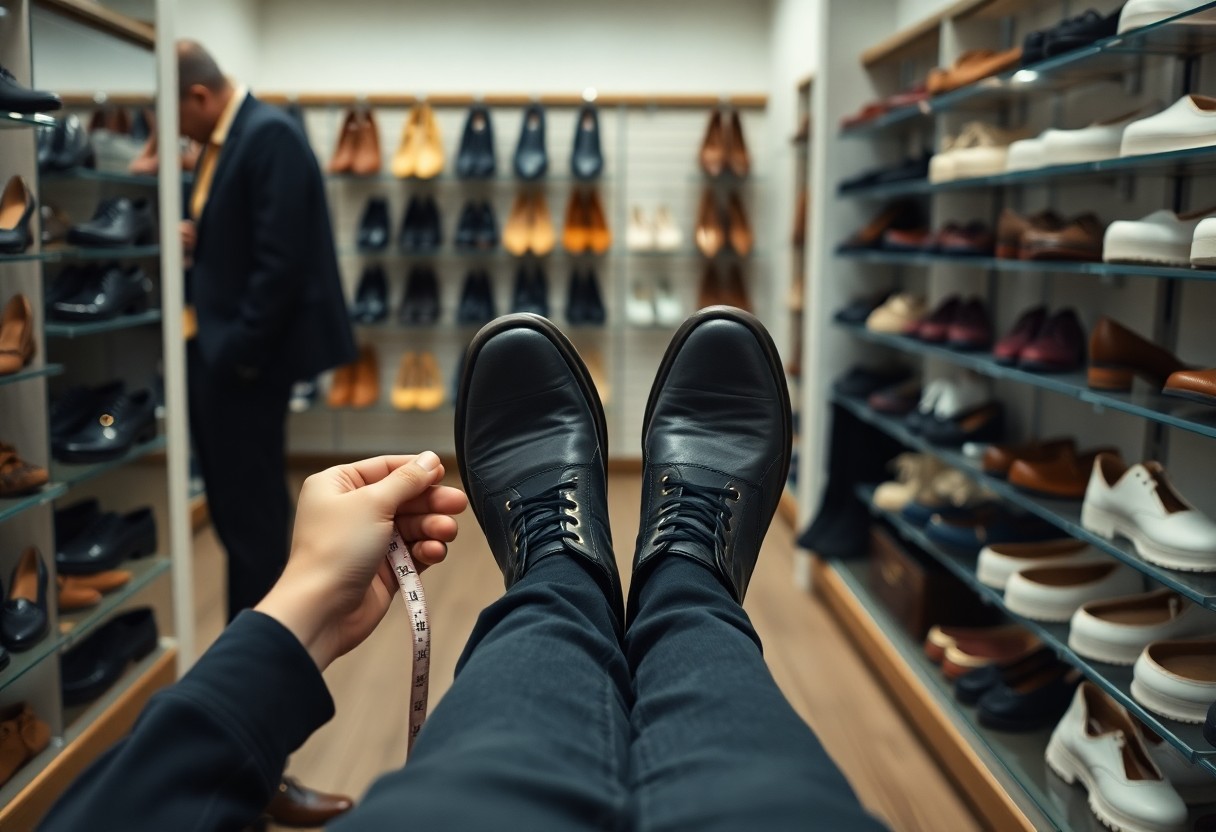
Steps to Accurately Measure Your Feet for the Right Shoe Size
Obtaining the correct shoe size hinges on accurately measuring both feet. It’s important to note that your feet can vary in size by as much as half a size, and foot dimensions can fluctuate throughout the day. For best results, measure your feet in the afternoon when they are likely to be slightly swollen, ensuring the most comfortable fit possible. This simple practice can significantly enhance your overall shoe shopping experience, leading to a better fit and greater satisfaction with your purchase.
Leveraging Professional Measurement Techniques for Accuracy
Professional shoe fitting typically involves the use of a Brannock Device, which accurately measures your foot’s length, width, and arch length. This detailed three-dimensional measurement is essential for determining your exact shoe size. A qualified shoe specialist will measure both feet while you stand, taking into account weight distribution and the natural spreading of your feet when bearing weight. This professional approach ensures a more accurate fit, helping you avoid the discomfort and complications that can arise from poorly fitted footwear.
Implementing Effective At-Home Sizing Techniques
To measure your feet at home, place a piece of paper on a flat surface and trace the outline of your foot while standing. Measure the distance from your heel to your longest toe and the width at the widest point. To ensure adequate space for toe movement and comfort, add an extra 3/8 inch to these measurements. This additional allowance will help accommodate natural foot swelling and movement during daily activities. To enhance the accuracy of your at-home measurements, it’s advisable to measure your feet in the evening and wear the socks you intend to use with your new shoes. Ensure that there’s a thumb's width of space between your longest toe and the shoe’s tip; this allowance helps prevent toe injuries and supports natural foot movement during walking.
Avoiding Common Mistakes in Shoe Sizing
Many individuals are under the impression that they know their correct shoe size, yet studies reveal that up to 60% of people wear shoes that are not the correct size. Common missteps include clinging to the same shoe size for years, disregarding width measurements, and overlooking size discrepancies between your two feet. These mistakes can result in serious foot problems and significant discomfort. Being aware of these common pitfalls can help you make more informed decisions when selecting footwear, ultimately improving your foot health and comfort.
Recognizing Size Variations Across Different Brands
Sizing inconsistencies among various shoe brands can greatly influence your comfort level. For instance, a size 8 in one brand might feel like a size 9 in another due to differing manufacturing standards and design philosophies. Always try on shoes regardless of the size indicated on the label, as these variations can have serious implications for your foot health. It's essential to approach shoe shopping with an open mind, as the brand can impact fit and comfort significantly.
Timing Your Shoe Shopping for the Best Fit
The timing of your shoe shopping is crucial. Your feet naturally swell throughout the day, expanding by as much as half a size larger by the evening. Shopping in the afternoon gives you the best chance to find a fit that accommodates your daily needs. It’s a simple yet effective strategy to ensure that your new shoes will be comfortable throughout various activities. In addition to daily swelling, your feet may expand during physical activities or in warmer weather. Buying shoes too early in the day may lead to tight-fitting footwear that becomes uncomfortable later. Always ensure there is a thumb's width of space between your longest toe and the shoe’s tip when trying on new shoes in the afternoon.
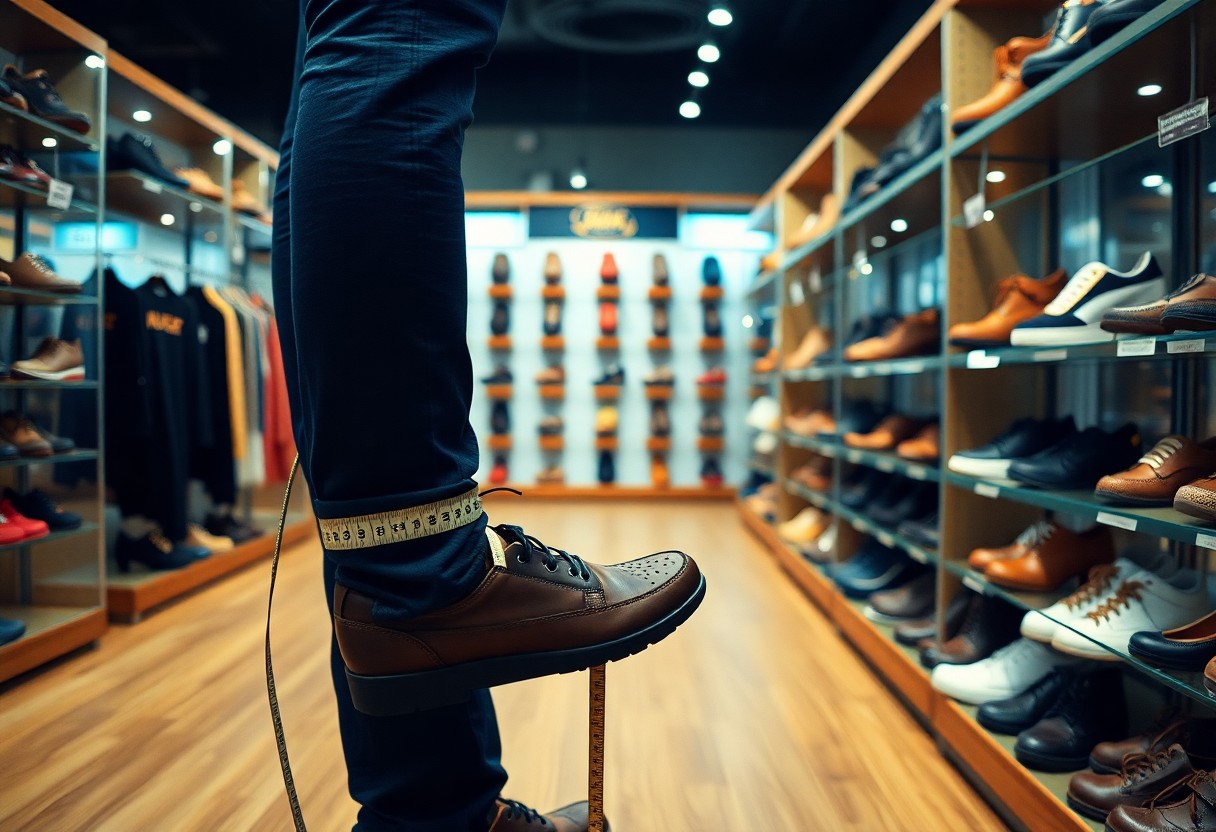
Understanding the Health Consequences of Wearing Proper Shoe Sizes
Your choice of shoe size can have a profound impact on your overall health. Wearing shoes that do not fit well can affect your entire body, from your toes to your spine. Studies indicate that 72% of individuals experience foot-related health issues as a result of incorrect shoe sizes, which can lead to altered walking patterns and subsequent posture problems. By prioritizing proper fit, you can improve not only your foot health but your overall well-being.
Immediate Health Effects of Ill-Fitting Shoes
In terms of immediate comfort and health, wearing shoes that are the wrong size can lead to blisters, corns, and painful pressure points. You may also experience foot fatigue, strain in the ankles, and reduced balance. These issues can interfere with your daily activities, causing discomfort while walking, with 85% of individuals reporting immediate discomfort when wearing ill-fitting shoes. Addressing these discomforts early can prevent further complications and ensure you stay active and mobile.
Long-Term Repercussions of Wearing Incorrect Shoe Sizes
Long-term use of shoes that do not fit properly can result in permanent foot deformities, including conditions such as bunions, hammer toes, and plantar fasciitis. Changes in your walking pattern may occur as you adjust to discomfort, potentially leading to knee, hip, and back issues. Research indicates that 60% of chronic foot problems can be traced back to poorly fitting shoes. Understanding these long-term risks highlights the importance of investing time and effort into finding the right shoe size and style.
The repercussions of wearing the wrong shoe size extend beyond foot health. You may suffer from poor posture, reduced mobility, and chronic pain. Medical research shows that proper shoe fit can prevent up to 80% of common foot issues and enhance your overall quality of life. The shoes you choose today can have lasting effects on your foot health for years to come, making it imperative to select wisely.
Special Footwear Considerations During Different Life Stages and Health Conditions
It’s essential to recognize that your feet require special attention during various life stages and health conditions. Factors such as age, weight fluctuations, and specific medical conditions can influence your shoe size. Regular foot measurements are crucial, as wearing the wrong size can lead to severe foot problems and diminished mobility. By staying aware of these factors, you can ensure that your footwear continues to meet your changing needs.
Age-Related Changes That Impact Foot Size
Beyond the natural aging process, your feet undergo significant changes over time. As you age, your feet may become wider and flatter due to a loss of elasticity in tendons and ligaments. Research indicates that foot size can increase by half a size every decade after age 40. It's advisable to measure your feet annually to ensure a proper fit. Regularly updating your shoe collection can help maintain comfort and support, especially as your body changes.
Health Conditions That Affect Shoe Size Requirements
Your health status significantly impacts your shoe size. Conditions such as diabetes, arthritis, and edema can lead to notable foot swelling, necessitating adjustments in shoe size. If you have any of these conditions, it's important to pay close attention to shoe fit to prevent complications. These adjustments can mitigate discomfort and enhance mobility, allowing you to maintain an active lifestyle.
Moreover, certain medications can also lead to foot swelling as a side effect. Poorly fitting shoes can exacerbate existing medical conditions and create new problems. For individuals with diabetes, regular foot inspections are vital, and it’s crucial to ensure shoes provide adequate space and support. Research has shown that appropriate footwear can lower the risk of diabetic foot complications by up to 50%. Taking the time to find the right fit can significantly improve daily comfort and reduce health risks.
Expert Tips and Guidelines for Successful Shoe Shopping
Despite common misconceptions, effective shoe shopping requires meticulous attention to detail. Your foot size can fluctuate throughout the day, making afternoon shopping the optimal choice when feet are at their largest. As your feet naturally expand throughout daily activities, this timing will yield the most accurate fit measurements. This approach can help you avoid the frustration of purchasing shoes that become uncomfortable after just a few hours of wear.
Essential Tips for Ensuring the Perfect Shoe Fit
Contrary to popular belief, achieving the right fit requires more than just measuring length. Below are essential considerations to ensure a proper fit:
- Ensure a thumb-width space exists between your longest toe and the shoe tip
- Confirm that arch support is appropriate for your foot type
- Try on shoes with your regular socks for the best fit
- Walk around to assess heel grip and overall comfort
Any discomfort felt during the initial fitting is likely to worsen with extended wear, so it’s crucial to address these issues upfront. Taking these steps can greatly enhance your comfort and satisfaction with your footwear choices.
Knowing When It’s Time to Replace Your Shoes
It’s important to replace shoes when they exhibit specific signs of wear. Look for worn treads, uneven sole wear, or when you have logged 400-500 miles in athletic shoes. Regularly assessing your shoes for wear can help you maintain optimal foot health and comfort. When your shoes display these warning signs, don’t hesitate to replace them: visible creasing in the midsole, loss of cushioning, or wear in the interior lining. Your feet require reliable support every 8-12 months for daily-wear shoes, and even more frequently for athletic footwear. Continuing to wear worn-out shoes can lead to severe foot pain and injury.
Common Questions Regarding Shoe Sizing Answered
Q: How can I determine if my shoes are too tight during everyday use?
A: Be on the lookout for these obvious indicators: numbness or tingling sensations in your toes, blisters developing on your heels or toes, and noticeable red marks on your feet after removing your shoes. Your toes should have adequate space to wiggle freely, and your heel should remain secure without slipping during movement. If you notice pressure points or discomfort after wearing shoes for just a few hours, it’s likely that your shoes are too tight. Regularly evaluating your shoe fit can help you avoid potential foot issues.
Q: What is the optimal time of day for measuring foot size and trying on new shoes?
A: The best time to measure your feet and try on new shoes is in the late afternoon or evening. Feet naturally swell throughout the day, reaching their largest size by evening. This timing ensures that you select shoes that will fit comfortably even when your feet are at their fullest. Always remember to measure both feet, as one foot is often slightly larger than the other. This simple practice can ensure a more accurate fit and enhance your overall comfort.
Q: How much space should be between my longest toe and the front of the shoe?
A: You should allow for approximately 3/8 to 1/2 inch (or thumb width) of space between your longest toe and the shoe tip. This gap permits natural foot movement while walking and helps prevent toe injuries. Your toes should never touch the front of the shoe while standing or walking. To test this, stand up and slide your finger behind your heel – it should fit snugly without feeling tight. Ensuring this space will contribute to a more comfortable and healthier shoe fit.
The Article How to know if you're wearing the right shoe size signs and tips for a perfect fit appeared first on My Shoes Finder
The Article Signs and Tips for Knowing Your Right Shoe Size Was Found On https://limitsofstrategy.com

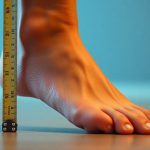
Your insights on shoe sizing really resonate with me. I’ve definitely experienced the discomfort of wearing shoes that didn’t fit properly and have had to deal with the aftermath, like blisters and even a sprained ankle from a misstep in poorly fitting sneakers. It’s surprising how often we overlook something as routine as shoe shopping, especially considering how much we rely on our feet every day.
It’s striking how a seemingly simple task like shoe shopping can lead to such significant discomfort. Blisters and sprained ankles can sneak up on you, especially when you’re caught up in the hustle of daily life. It’s a bit of a paradox, right? We put so much thought into what we wear on other parts of our bodies but often just grab any old pair of shoes without considering fit and support.